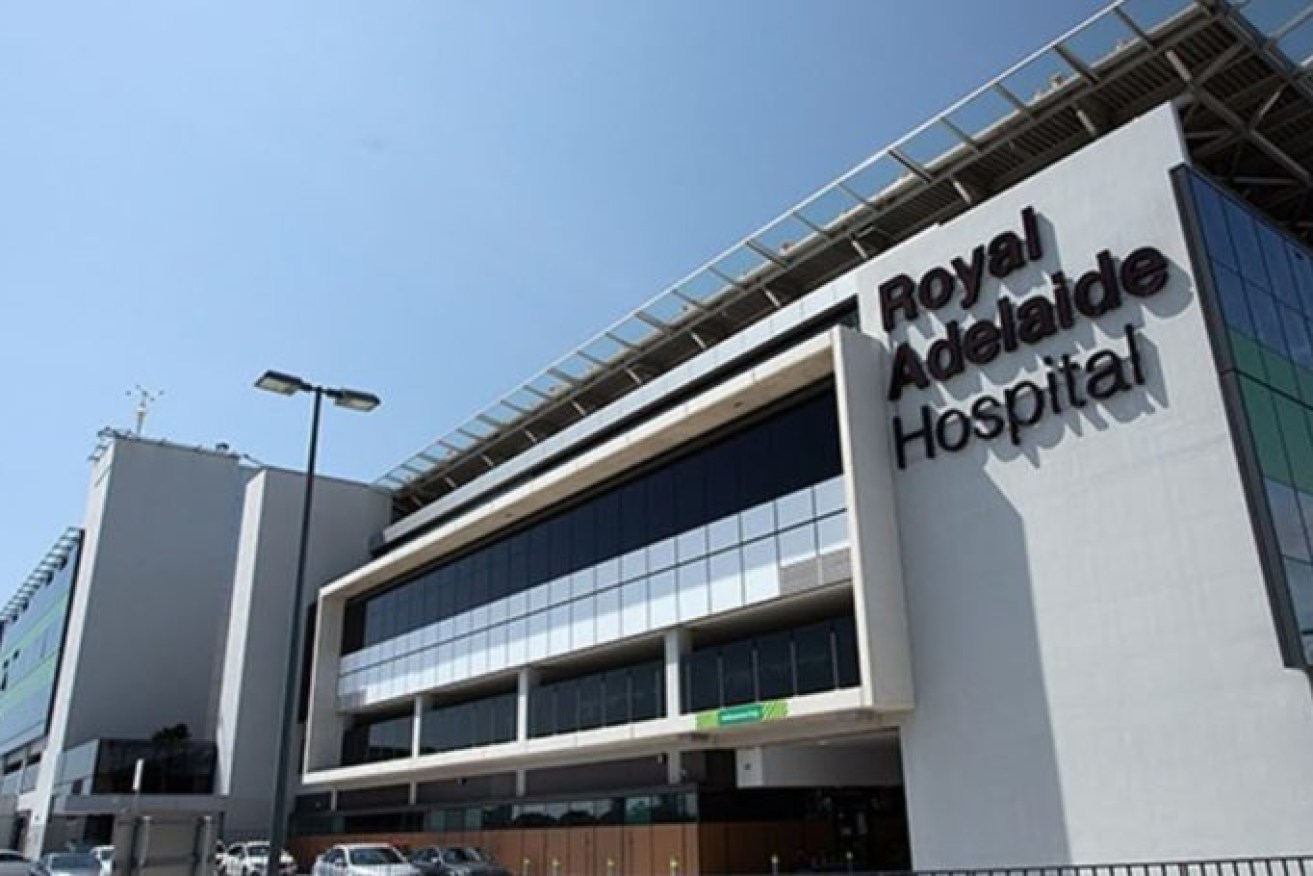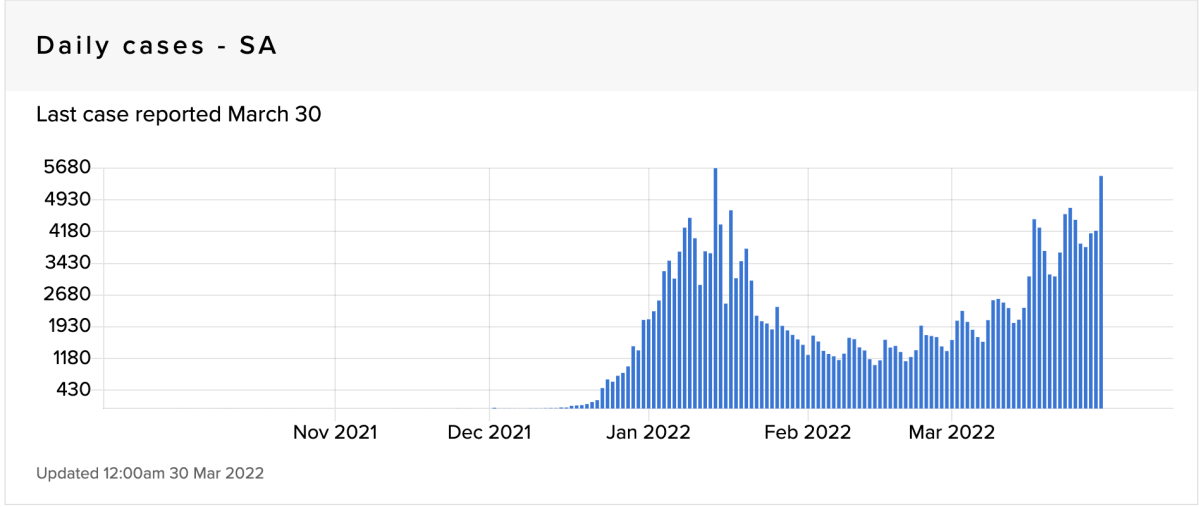Extra ICU beds readied for expected SA COVID surge
The Malinauskas Government says an extra 24 intensive care beds at the Royal Adelaide Hospital are being readied for use to prepare for next month’s expected surge of COVID cases as SA Health advises the hospital system is under “substantial strain”.


Photo: Tony Lewis/InDaily
Labor has repeatedly flagged its intention to stand up 200 extra hospital beds in the short term to deal with a peak of up to 8000 cases a day by early April.
Premier Peter Malinauskas today announced the Government will stand up an extra 24 intensive care beds at the RAH to prepare for the surge.
The 24 “stand-by” beds consist of a 12-bed expansion of the RAH’s existing ICU unit along with an intensive care room that has been used for storage and research, as a whistleblower revealed in October last year.
Labor said today that SA Health “has advised the Premier and the Health Minister [Chris Picton] the hospital system is already under substantial strain”.
100 extra “contingency” beds have been found across metro, regional and private hospitals and can be “mobilised over the next month”, Labor says.
“The increased bed capacity will support the health system across South Australia to ensure that we keep our state safe during the expected surge in COVID-19 cases,” Malinauskas said in a statement.
“South Australians can be assured that our health system is prepared to care for them if they contract the virus.”
The ambulance service dashboard this morning showed the emergency departments of the Royal Adelaide Hospital, Flinders Medical Centre, Lyell McEwin Hospital, Noarlunga Hospital and Queen Elizabeth all at or above capacity.
The South Australian Ambulance Service has called an Opstat White alert on Monday and Tuesday this week.
The status means the ambulance service’s “operational capacity, capability and/or resources are insufficient to maintain effective service delivery for high acuity cases”.
SA COVID cases tipped to peak next week
Police commissioner and state emergency coordinator Grant Stevens says South Australia’s daily cases will hit their peak next week before declining towards the middle of April.
SA Health recorded two deaths and 5496 new cases on Wednesday – the second-highest number of the pandemic, behind only the 5679 infections reported on January 14.
Wednesday’s numbers also saw hospitalisations increase from 170 to 180, with seven people in intensive care and two on a ventilator.
But Stevens said he anticipates the state will have passed the caseload peak by the second week of April.
“The modelling shows us that we should be starting to come down from the other side of that peak by about the 9th or 10th or 11th of April,” he told ABC Radio this morning.
“We’re confident the modelling is a great indicator for us in terms of making decisions.
“So we’re aiming for probably the first week of April to see that peak, and we hope we come down the other side.”

Graph showing daily COVID-19 cases in South Australia since the state’s borders opened. Photo: SA Health
Stevens, who yesterday relaxed vaccination mandates for schools and passenger transport workers, said he is reviewing the emergency management declaration “virtually on a daily basis”.
The Premier has set a June 30 deadline for the declaration, which gives Stevens broad powers to enforce COVID-19 directions, to end.
“I could potentially revoke the direction in the next 28 days or it could lapse in a 28-day period,” Stevens said.
“But there is a possibility as well that there may be a requirement to potentially see one further extension.
“The Premier indicated he’s made it quite clear he’d like to see the 28-day renewal process ended by the 30th of June.
“I’m keen to see it before that, but it just relies on us being satisfied that we’ve taken care of all of those measures that need to be in place so we know we can manage COVID going forward.”
Stevens said one of the key reasons the declaration is still in place is to ensure authorities can direct quarantine for close contacts and COVID-positive people.
“SA Health are working to develop alternatives so that we can continue to manage people’s quarantine and isolation,” he said.
“So we’ll just have to wait and see how that plays out.”
Meanwhile, the state’s school system continues to be strained by staff and student absentees.
Education Department CEO Rick Persse this morning said the number of schools undergoing three-day classroom “circuit-breaker” lockdowns has grown to 23, up from 16 yesterday.
The lockdowns are introduced when five students test positive in the same class over seven days.
“We’ve certainly got some schools that have been under the pump,” he told FIVEaa today.
“They’re mainly primary schools and they’re just dotted all around metro but also one on Yorkes and one on Eyre Peninsula.”
There were 883 teachers and school services officers absent on Wednesday due to COVID, up from 758 last week, according to Education Department figures.
The rate of children absent from school has grown to 4.1 per cent, according to Education Department figures, well up from around two per cent at the start of the month.
Sacred Heart College in Adelaide’s south has told parents it will be setting aside two student-free “preparation days” – one at the end of term one and another at the start of term two – to help teachers prepare learning materials amid a wave of COVID-19 cases.
“For the past two weeks we have had around 20 per cent of our students (400-550) absent each day along with a large number of staff (20-30) who are either COVID Positive, Close Contacts or Carers,” Sacred Heart principal Steve Byrne told parents on Wednesday.
“The preparation days are intended to be used by staff to to prepare materials for Term 2 with a focus on preparing materials that can be readily accessed by students who are forced to quarantine, as well as being ready to deliver remote learning if that becomes necessary.”
Around 205 unvaccinated staff out of the Education Department’s 31,000-strong workforce were allowed to return to work today provided they take a daily government-provided rapid antigen test.




